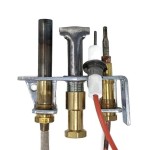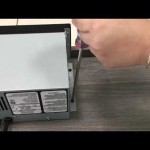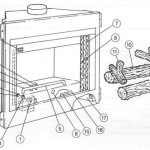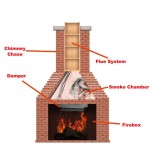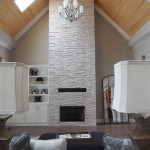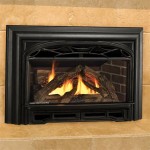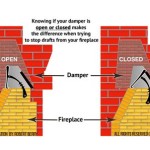Pilot Light Gas Fireplace Won't Stay Lit: Troubleshooting and Solutions
A gas fireplace provides warmth and ambiance during colder months. A persistent issue homeowners might encounter is a pilot light that refuses to stay lit. This problem, while seemingly small, prevents the entire fireplace from functioning. Understanding the potential causes and troubleshooting steps will facilitate restoring the fireplace to its optimal operational status. This article delves into the common reasons for a pilot light extinguishing and provides a comprehensive guide to diagnose and resolve the problem.
Thermocouple Malfunction
The thermocouple is a safety device integral to the functioning of a gas fireplace. Its primary function involves sensing the heat generated by the pilot light flame. When the pilot light is lit, the thermocouple generates a small electrical current. This current signals the gas valve to remain open, allowing gas to flow to the main burner when the fireplace is activated. If the thermocouple fails to generate sufficient current, the gas valve will automatically close, extinguishing the pilot light. This safety mechanism prevents unburned gas from accumulating, mitigating the risk of a gas leak or explosion.
Several factors can lead to a thermocouple malfunction. One common cause is a build-up of soot or carbon deposits on the thermocouple tip. These deposits insulate the thermocouple, preventing it from properly sensing the heat of the pilot light. Another possible reason is a bent or damaged thermocouple. Physical damage can disrupt the electrical circuit, preventing the generation of the necessary current. Additionally, the thermocouple can simply wear out over time, requiring replacement.
Troubleshooting a thermocouple involves several steps. First, visually inspect the thermocouple for any signs of damage or carbon build-up. If carbon deposits are present, carefully clean the tip using fine-grit sandpaper or steel wool. Ensure the thermocouple is properly positioned within the pilot light flame. A multimeter can be used to test the thermocouple's output. With the pilot light lit, the thermocouple should generate a millivolt reading within the manufacturer's specifications. If the reading is low or nonexistent, the thermocouple likely needs replacement. Replacing a thermocouple typically involves disconnecting the gas supply, removing the old thermocouple, installing the new one, and reconnecting the gas supply, followed by a leak test to ensure safety.
Dirty Pilot Light Orifice
The pilot light orifice, a small opening through which gas flows to feed the pilot light flame, is susceptible to becoming clogged with dust, debris, or corrosion. A partially or fully blocked orifice restricts the gas flow, resulting in a weak or unstable pilot light flame. A weak flame might not adequately heat the thermocouple, causing the pilot light to extinguish. The quality of the gas itself can sometimes contribute to the issue, as impurities in the gas can accumulate within the orifice over time.
Identifying a dirty pilot light orifice often involves observing the characteristics of the pilot light flame. A healthy pilot light flame should be steady, blue in color, and of a sufficient size to engulf the thermocouple. A flame that is small, yellow, or flickering indicates a potential issue with the gas supply or a clogged orifice. In some cases, the pilot light might light briefly but quickly extinguish due to insufficient gas flow.
Cleaning a pilot light orifice requires careful attention to detail. The first step is to shut off the gas supply to the fireplace. Locate the pilot light assembly and carefully remove the orifice. A small wire or a specialized orifice cleaning tool can be used to clear any obstructions. Avoid using excessively large or sharp objects, as these could damage the delicate orifice. Once the orifice is cleaned, reassemble the pilot light assembly and turn the gas supply back on. Test the pilot light to ensure it lights and remains lit consistently. If the problem persists, further investigation might be necessary to rule out other causes.
Gas Supply Issues
A consistent and adequate gas supply is crucial for the proper operation of a gas fireplace. Problems with the gas supply, such as low gas pressure, a faulty gas regulator, or closed gas valves, can all contribute to a pilot light that won't stay lit. Inadequate gas pressure might result in a weak pilot light flame, insufficient to heat the thermocouple and keep the gas valve open. A faulty gas regulator, responsible for maintaining a consistent gas pressure, can cause fluctuations or a complete interruption of the gas supply. Partially or fully closed gas valves along the gas line will obviously restrict gas flow to the fireplace.
Several symptoms can indicate a gas supply issue. A weak or flickering pilot light flame, as mentioned previously, is a common sign. Other indicators include a hissing sound near the gas line, a noticeable odor of gas (even after the pilot light extinguishes), or other gas appliances in the home experiencing similar problems. If other gas appliances are malfunctioning, this strongly suggests a problem with the main gas supply to the house.
Troubleshooting gas supply issues requires a systematic approach. First, verify that all gas valves leading to the fireplace are fully open. Check the gas meter for any unusual readings or signs of damage. If low gas pressure is suspected, a qualified gas technician should be called to measure the gas pressure at the fireplace. A faulty gas regulator should be replaced by a professional. It is crucial to emphasize that working with gas lines can be dangerous. Any suspected gas leaks should be reported immediately to the gas company, and repairs should be performed by a licensed and qualified professional. A carbon monoxide detector should always be installed and functioning properly in the home to detect any potential leaks.
Drafts and Ventilation
External factors such as drafts and insufficient ventilation can also extinguish a pilot light. Strong drafts can blow out the pilot light flame, particularly if the flame is already weak due to other issues. Inadequate ventilation can lead to a build-up of combustion byproducts, reducing the oxygen available to sustain the pilot light flame. This is more common in older homes with less efficient ventilation systems.
Identifying drafts near the fireplace is often straightforward. Feel for air currents around windows, doors, and vents. Check for gaps or cracks in the fireplace surround. Observing the pilot light flame for flickering or swaying motions can also indicate the presence of drafts. A sudden gust of wind might cause the pilot light to extinguish abruptly.
Addressing draft issues involves sealing any gaps or cracks around the fireplace. Weather stripping can be used to seal windows and doors. Ensure the fireplace damper is properly adjusted to prevent excessive airflow. If ventilation is suspected as a problem, ensure the room is adequately ventilated by opening a window slightly or running a ventilation fan. If persistent ventilation issues exist, consider consulting with a HVAC professional to evaluate the ventilation system and recommend improvements. It's important to note that while adequate ventilation is necessary, excessive drafts should be avoided to maintain the stability of the pilot light flame.
Other Potential Issues
While the thermocouple, dirty orifice, and gas supply issues represent the most common causes for a pilot light that won't stay lit, other less frequent problems can also contribute. A faulty gas valve, although less common, can prevent gas from flowing to the pilot light even when the thermocouple is functioning correctly. Electrical problems, such as a loose connection or a malfunctioning igniter, can also prevent the pilot light from igniting or staying lit. Finally, in rare cases, the problem might stem from the fireplace's control module, which regulates the various functions of the fireplace.
Diagnosing these less common issues often requires specialized knowledge and equipment. A faulty gas valve can be tested by a qualified gas technician using specialized testing tools. Electrical problems can be identified using a multimeter to check for voltage and continuity. A malfunctioning igniter can be replaced if it fails to produce a spark. Problems with the control module often require replacement of the entire module. It is strongly recommended that these more complex issues be addressed by a qualified fireplace repair technician, as they involve potentially dangerous procedures and require specialized expertise.
Maintaining a gas fireplace involves regular cleaning and inspection to prevent many of these issues from arising. The fireplace should be cleaned annually to remove dust, debris, and soot. The pilot light assembly should be inspected for any signs of damage or corrosion. A professional fireplace inspection can identify potential problems before they lead to malfunctions and ensure the fireplace operates safely and efficiently. Regularly scheduled maintenance not only extends the lifespan of the fireplace but also ensures the safety and comfort of the home occupants.

Gas Fireplace Won T Stay Lit Magic Touch Mechanical

Gas Fireplace Won T Stay Lit Magic Touch Mechanical

Gas Fireplace Pilot Light Won T Stay Lit Easy Fix

Top 10 Reasons Why The Gas Pilot Light Goes Out Won T Stay Lit

Fireplace Won T Stay Lit This Is How You Fix It

Gas Fireplace Won T Stay Lit R Fixit

My Furnace Pilot Light Won T Stay Lit What Now Phyxter Home Services

Why Your Pilot Light Keeps Going Out How To Fix With S

How To Fix A Gas Fireplace Pilot Light That Does Not Stay Lit Troubleshooting And Repairing

How A Pilot Light Works Www Mygasfireplacerepair Com
Related Posts

